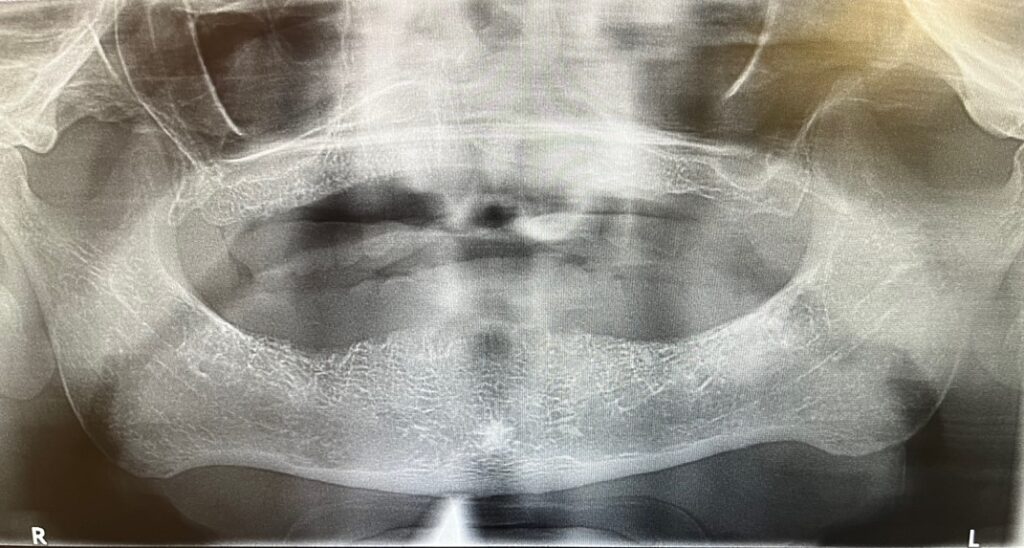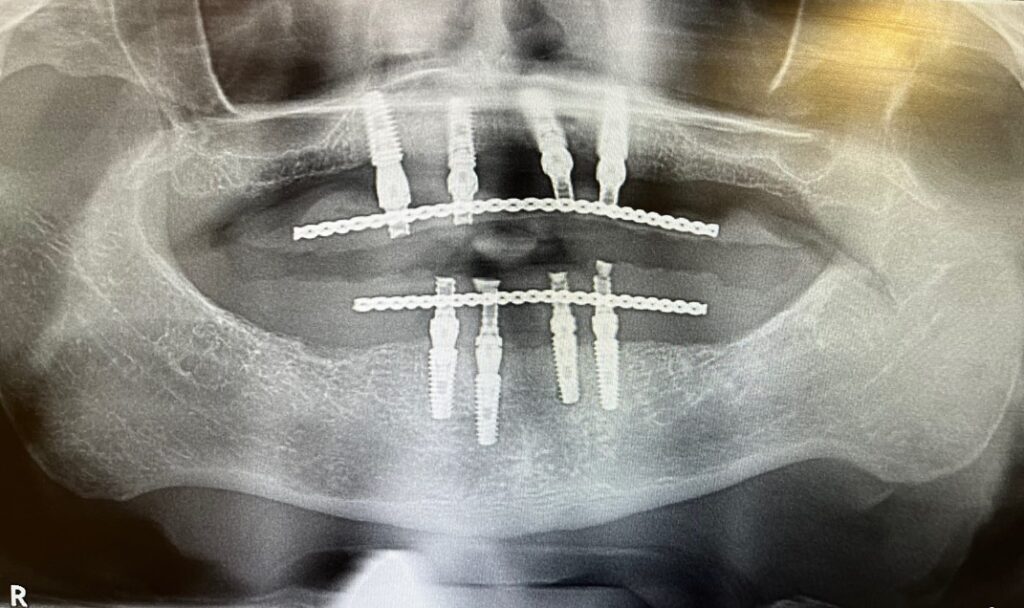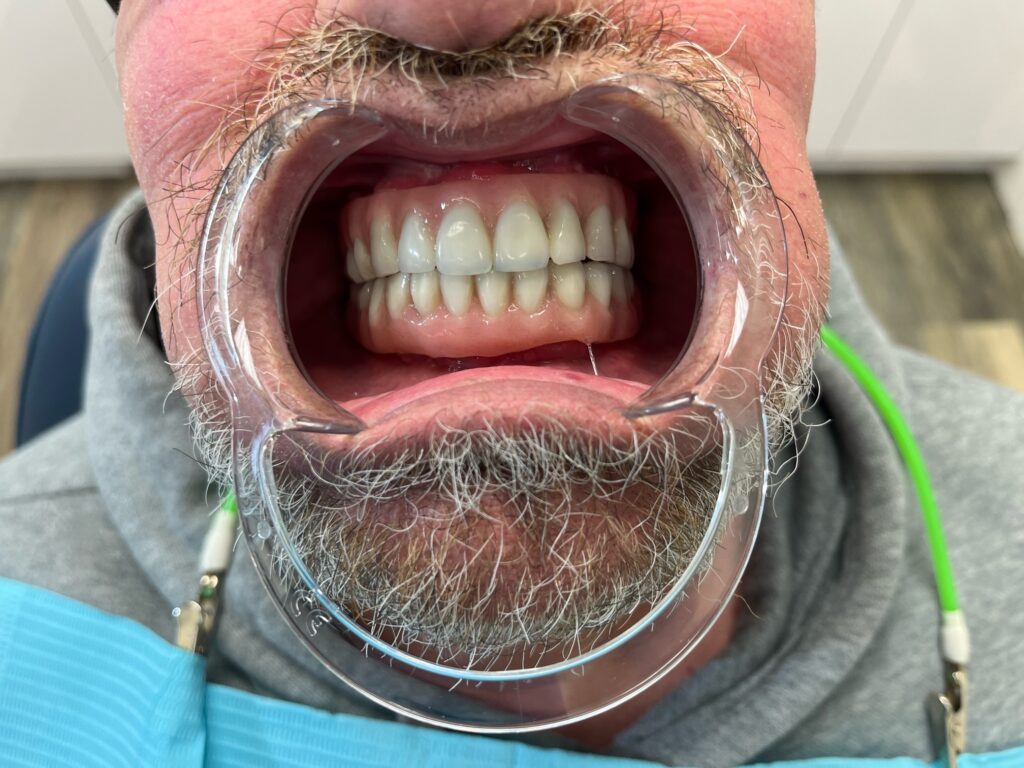The patient, a male in his 70s, presented to our office. His chief complaint was that he was very uncomfortable with his upper and lower denture. He had been wearing upper and lower full dentures for about 6 years but he hated them. Here is a list of things that he did not like about his full dentures:
- Discomfort: He was unable to chew comfortably with his dentures.
- Sore lesions: The dentures would cause sore lesions in his mouth due to their movement.
- Loss of taste sensation: He complained that the palate coverage of his upper denture prevented him from completely tasting his food.
- Psychology: It bothered him to take his denture teeth in and out daily.
The patient had been researching all-on-four teeth and was inclined toward getting them. He had been researching local dentists and shopping for a reasonable price. We were happy to discuss all-on-four teeth and help him fix his smile with dental implants.

The first step is to take an X-ray and evaluate the patient's jawbone. The patient had excellent lower jawbone, however, insufficient upper jawbone. This meant that we could place multiple dental implants in the lower jaw, however, only four dental implants in the upper jaw. His sinus cavity had pneumatized (dropped down) leaving insufficient space for the addition of more than four dental implants. We discussed the option of performing a lateral wall sinus graft to add additional dental implants. The patient wisely declined and decided to go with four dental implants instead, avoiding a difficult surgery. Since we were limited to placing four dental implants in the upper arch, we decided to place four dental implants in the lower jaws as well. Here are the benefits of placing four dental implants and performing all-on-four dental implant treatment:
- Far less costly than full mouth dental implants
- Quicker treatment times
- No need to perform difficult and painful sinus surgeries to lift the sinuses
We explained that the drawback of this treatment is that we were likely to give the patient 12 teeth per arch, as opposed to 14. The limited number of dental implants makes it impossible to extend the teeth as it causes cantilever forces that may fracture the teeth. Having said that, these additional teeth are almost unnecessary and contribute little to chewing forces. Additionally, we are unable to fabricate Zirconia teeth due to it's excessive weight. We elected to use porcelain teeth attached to resin base with a metal bar for support. The patient understood his treatment and agreed.

The surgery was performed under sedation using oral conscious sedation. We successfully placed four implants inside his upper jaw, followed by another four implants in the lower jaw. The surgery took about 2 hours and went without any incidents. The patient was dismissed and released to his companion. A follow-up appointment was scheduled in two weeks. We took an X-ray and confirmed the successful placement of all 8 dental implants.

Teeth Numbers: 12-unit Bridge
The patient received a pair of 12-unit bridges supported by four dental implants on each arch. By placing four dental implants, we were able to avoid complex sinus surgeries in the upper arch. Extending the bridge by two teeth is really not worth the additional pain and price that was involved with such a case.
Restoration Type: Screw-Retained
We made a screw-retained bridge that attaches to the four implants via multi-unit abutments. Going with the screw-retained bridge allows us to remove the teeth for cleaning or repair. The prosthesis is screwed in place once completed and stays in the mouth unless removed by your dentist.
Material: Pressed-Resin With Bar
Pressed resin is the material of choice when unable to place large implants due to lack of jawbone. This is the lightest material. Using heavier materials, such as zirconia or porcelain-fused-to-metal, can place additional stress on the implant screws and cause them to fail. Here are the benefits of using pressed-resin for all-on-four dental implants:
- Lightweight
- Easy to repair
The disadvantage of pressed resin is that it is prone to fracture. This is why it is important to place a bar that can handle the bite forces and prevent fracture.